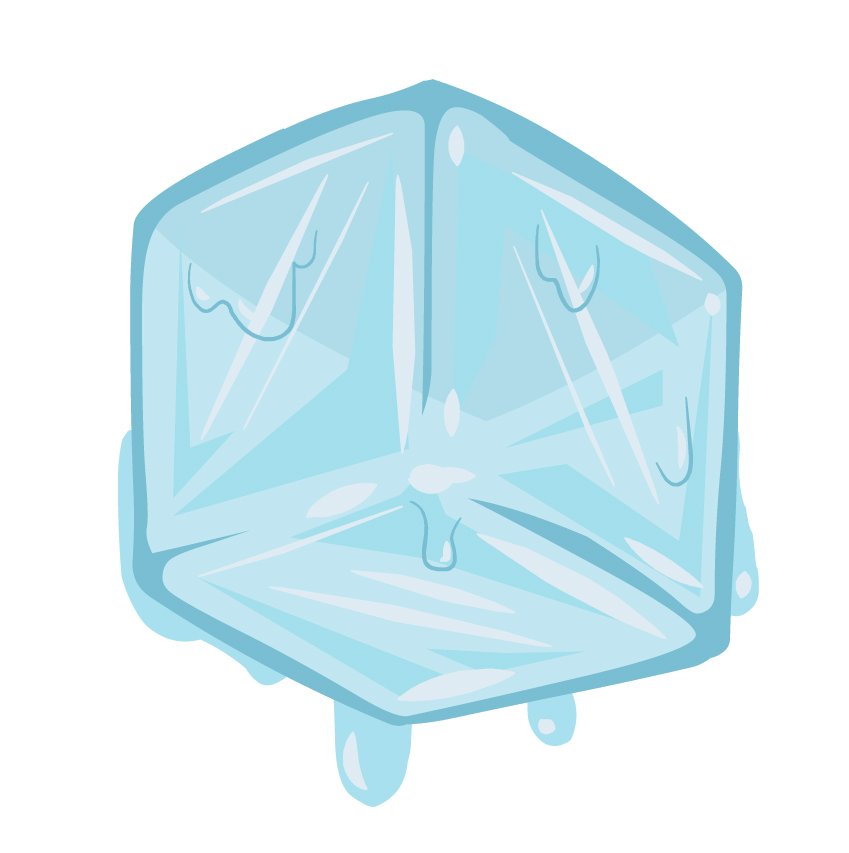Beagle group
Problems in the sea
Today’s oceans are in serious danger and action is needed to solve the various problems if ecosystems are to be sustained.
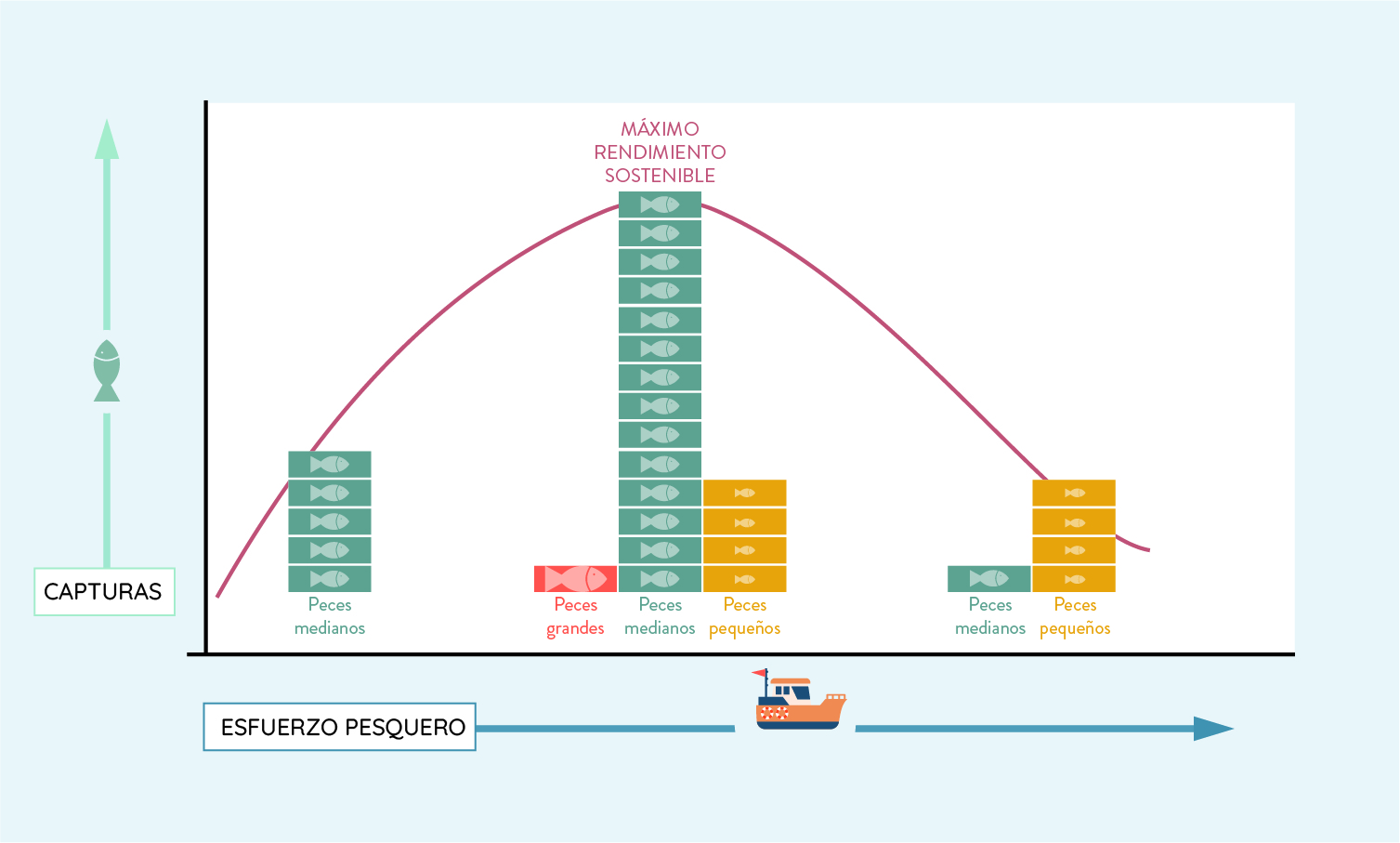
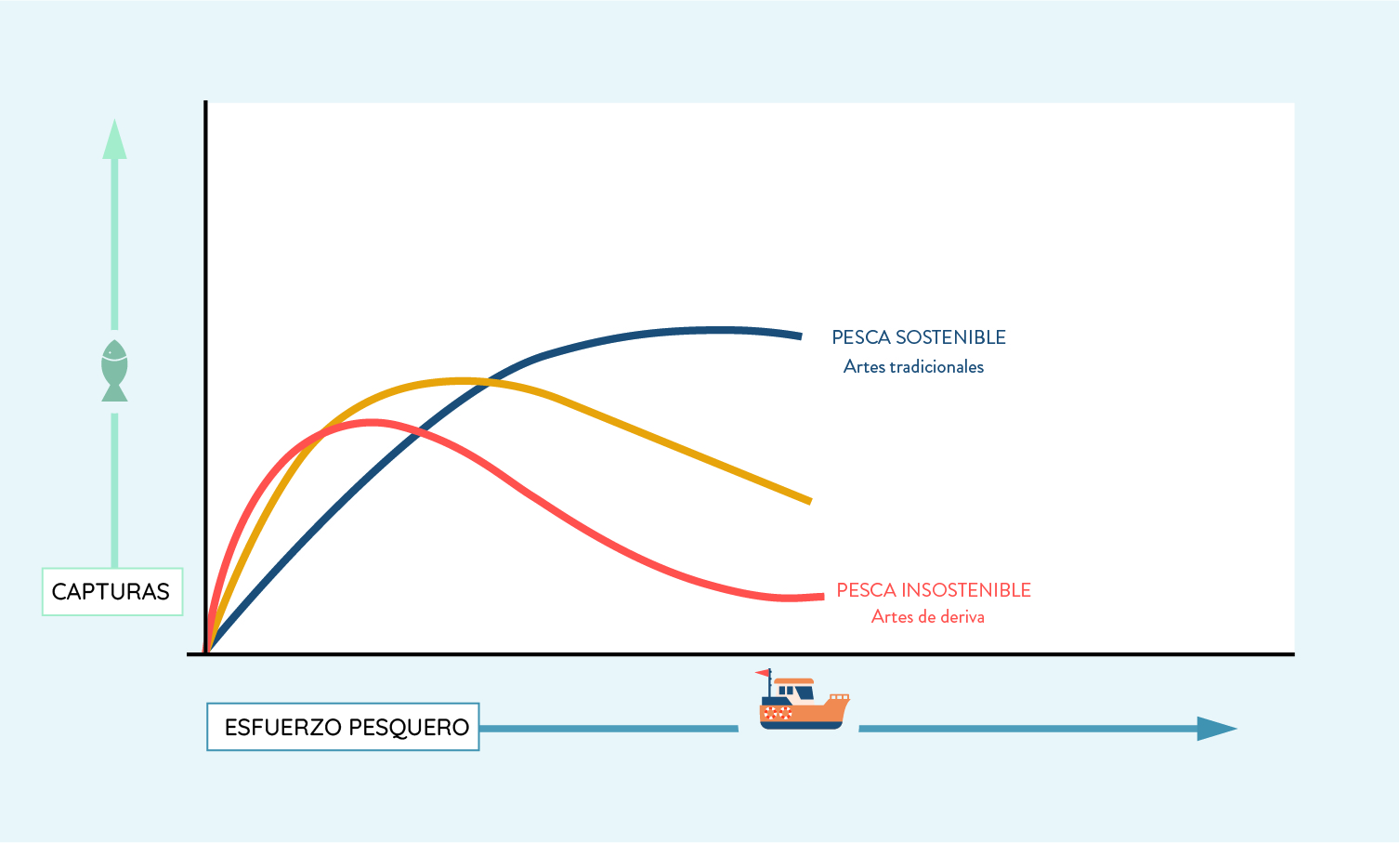
Fishery catch has fallen significantly since the end of the 20th century. In view of the graphs, could you explain how overfishing is influencing this decline, what are the biological factors? Around 25% of all fish caught never reach the market, 27 million tonnes are thrown into the sea every year.
You can find the answer in the different sections of PROBLEMS IN THE SEAS.
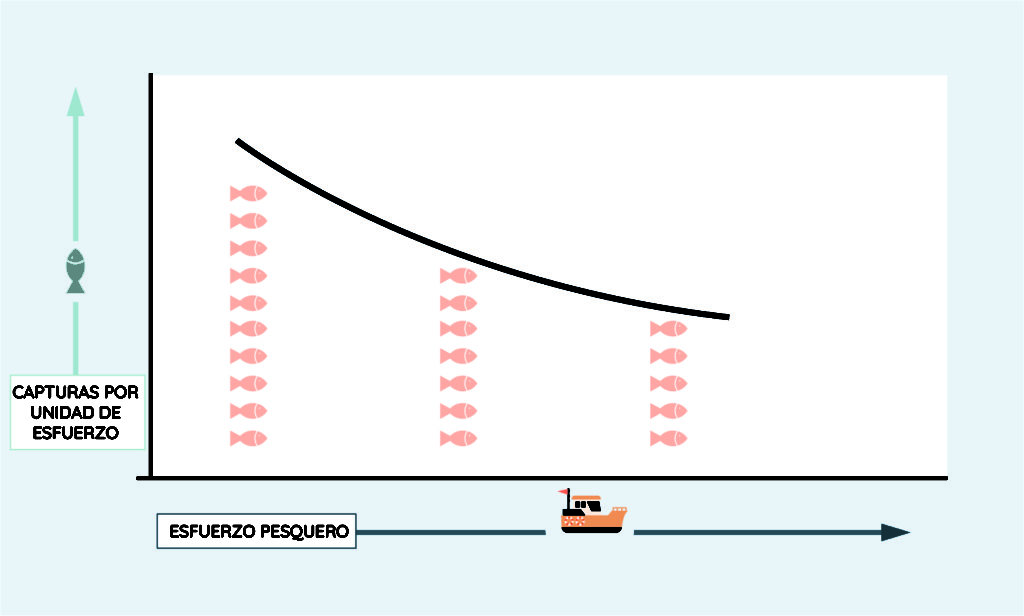
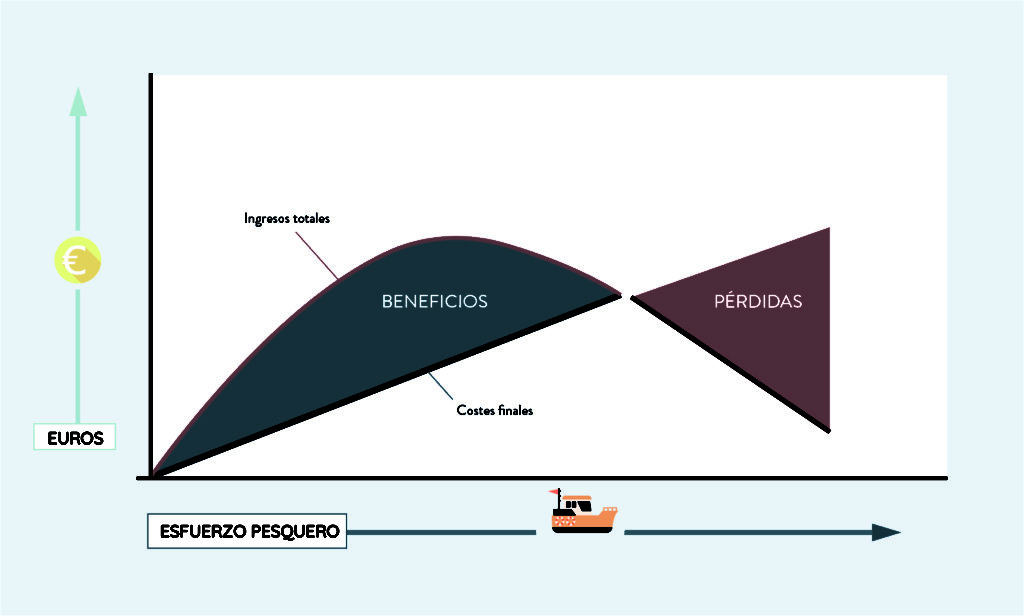
EXPLOITED AREA
Only 10% of the ocean surface area is exploited by fishing (dark blue areas). As you can see, there is still a great deal of ocean area to exploit. Do you think that if we exploited these areas, the catch would increase? Explain your answer.
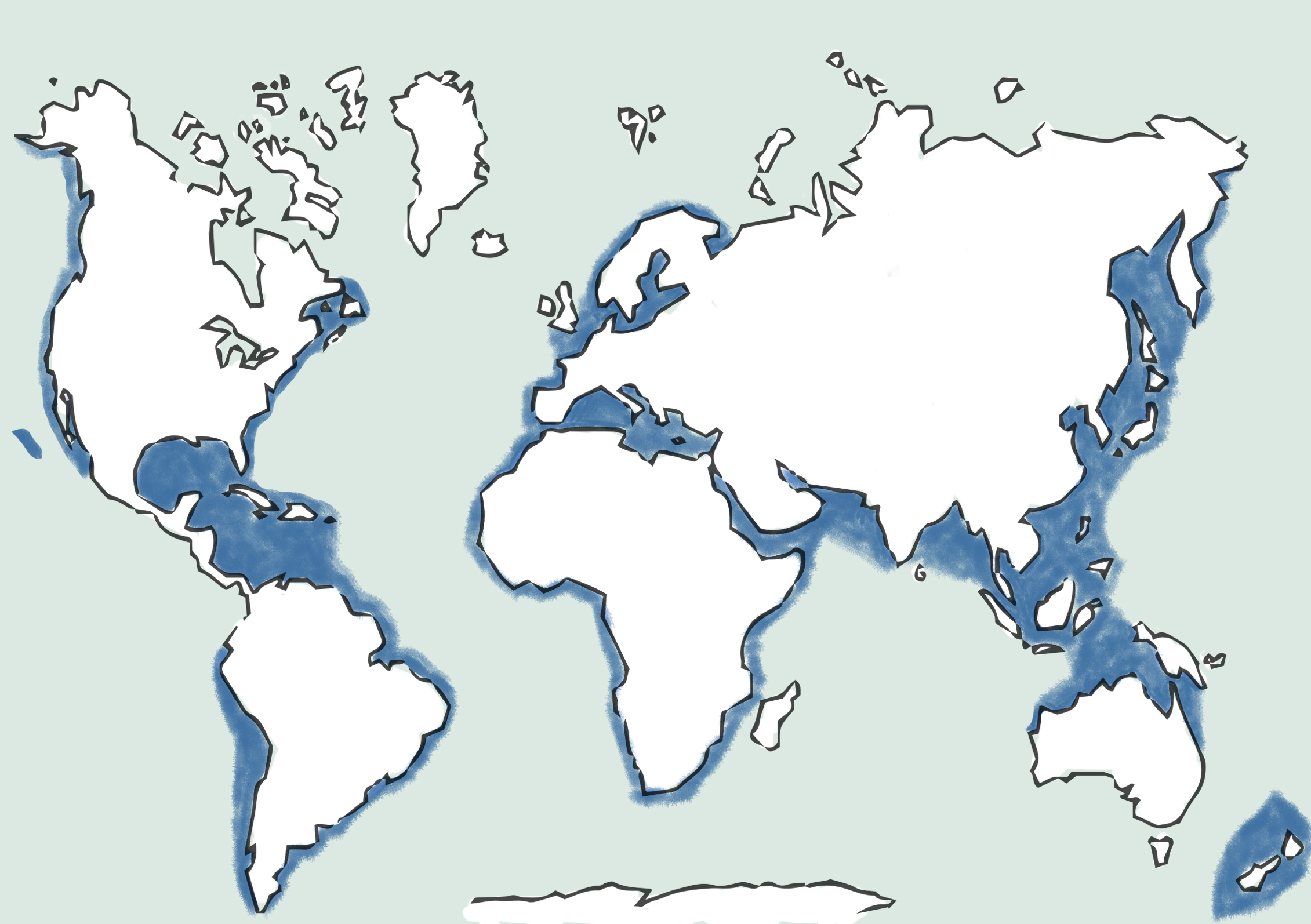
ARTISANAL/INDUSTRIAL FISHING
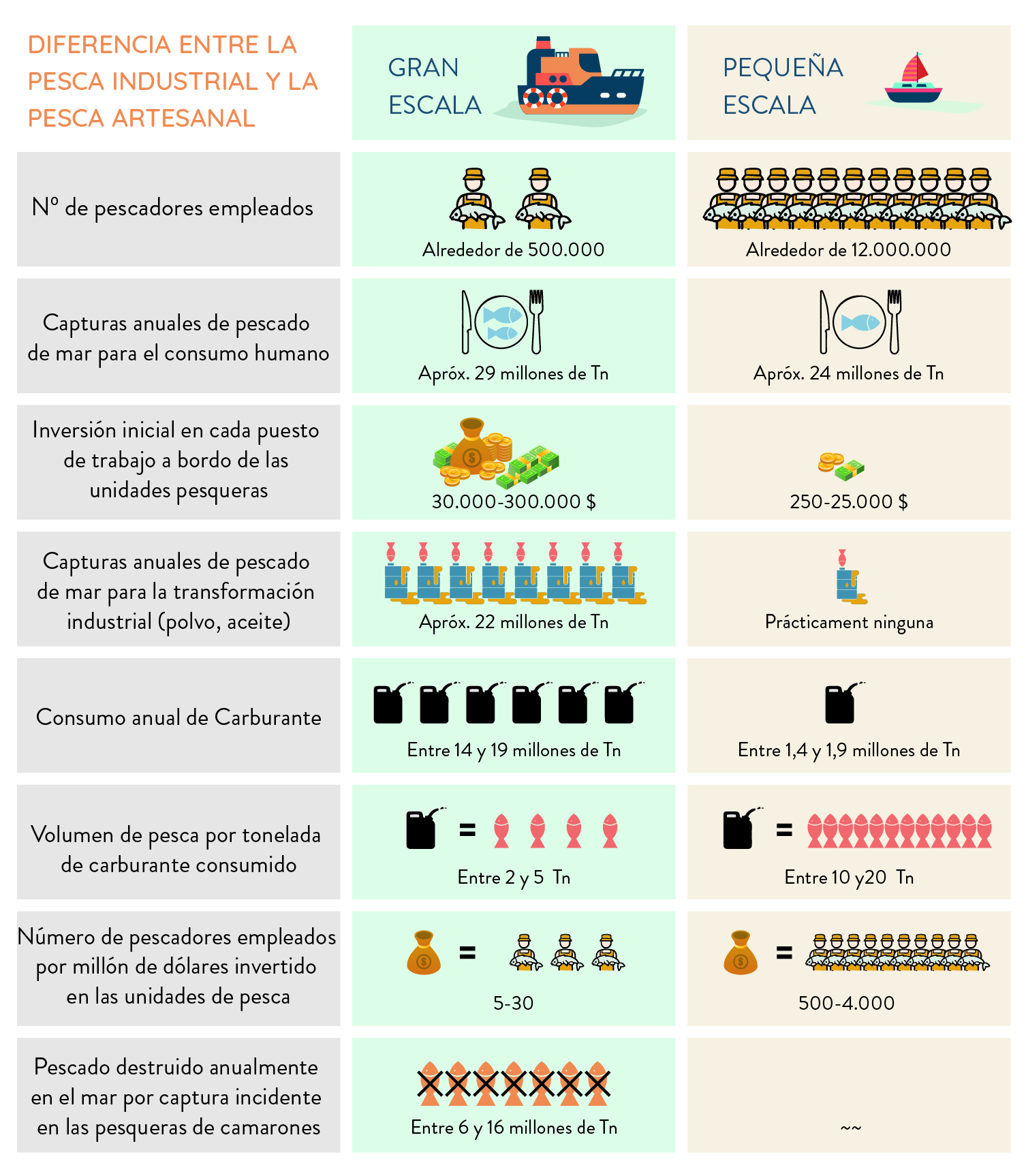
Modificado de Jacquet J, Pauly D (2008) Funding priorities: Big barriers to small-scale fisheries. Conservation Biology 22: 832-835 doi 10.1111/j.1523-1739.2008.00978.x
Fishery crisis
SEVERAL FACTORS ARE RESPONSIBLE FOR THE FISHERY CRISIS:
- The construction of large floating factories that operate night and day
- Government subsidy policy
- The use of unsuitable nets
- Overfishing
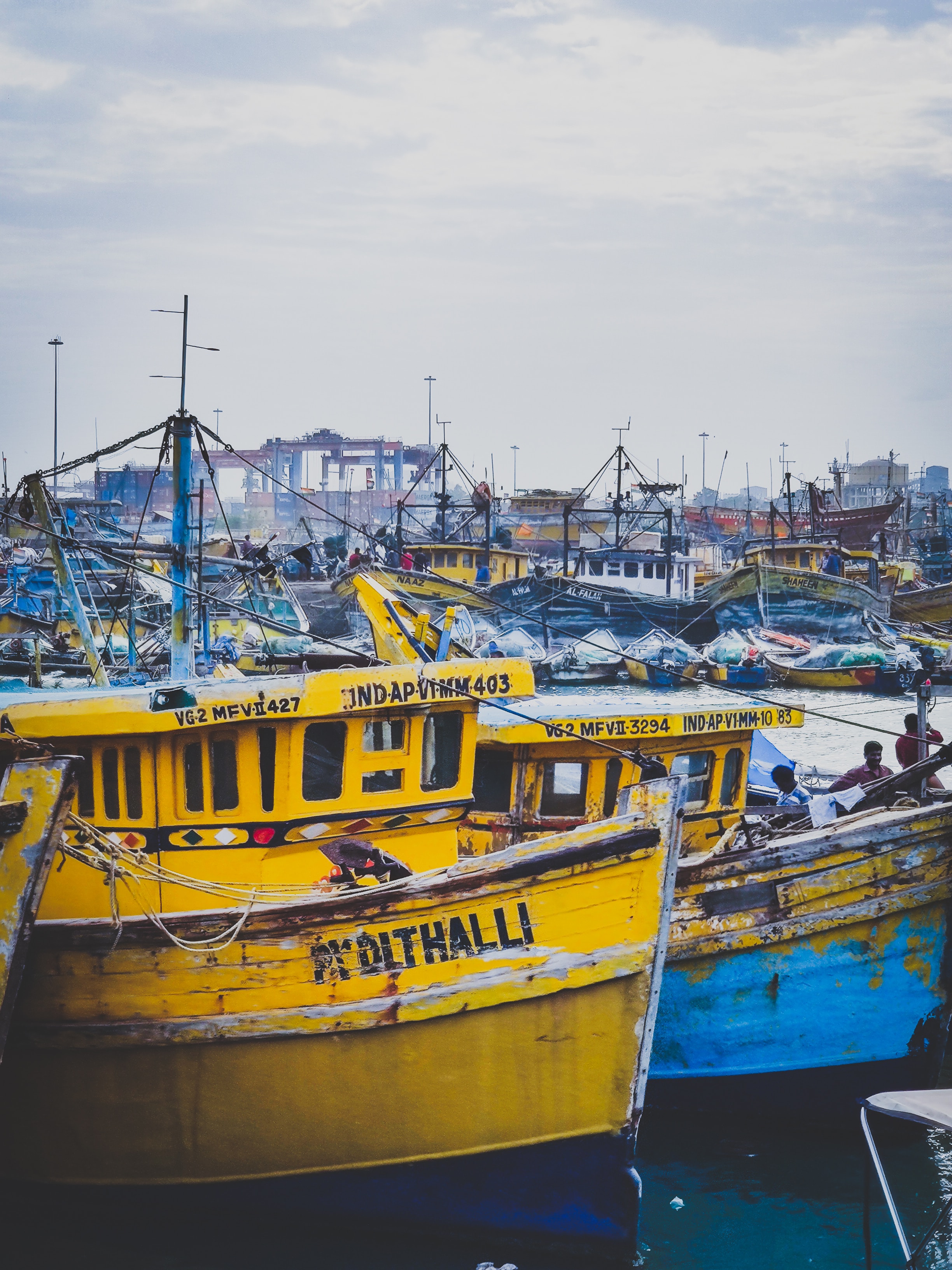
DRIFT NETS
Around 6% of all nets used, 9% of all passive fishing traps (baskets) and 29% of all longlines (fishing lines several kilometres long) remain in the sea.
This old fishing gear not only continues to kill sea life, but also seriously damages underwater habitats. Seamounts are particularly affected because they have a large variety of fish and are, consequently, intensely fished.
Around 640,000 tonnes of “ghost nets” (lost or abandoned fishing nets) end up in the oceans every year, the equivalent to over 50,000 double-decker buses. These nets represent 10% of the plastic in the sea and they often cause the death of marine fauna that become entangled and trapped (Greenpeace, “Ghost Gear: The Abandoned Fishing Nets Haunting Our Oceans”).
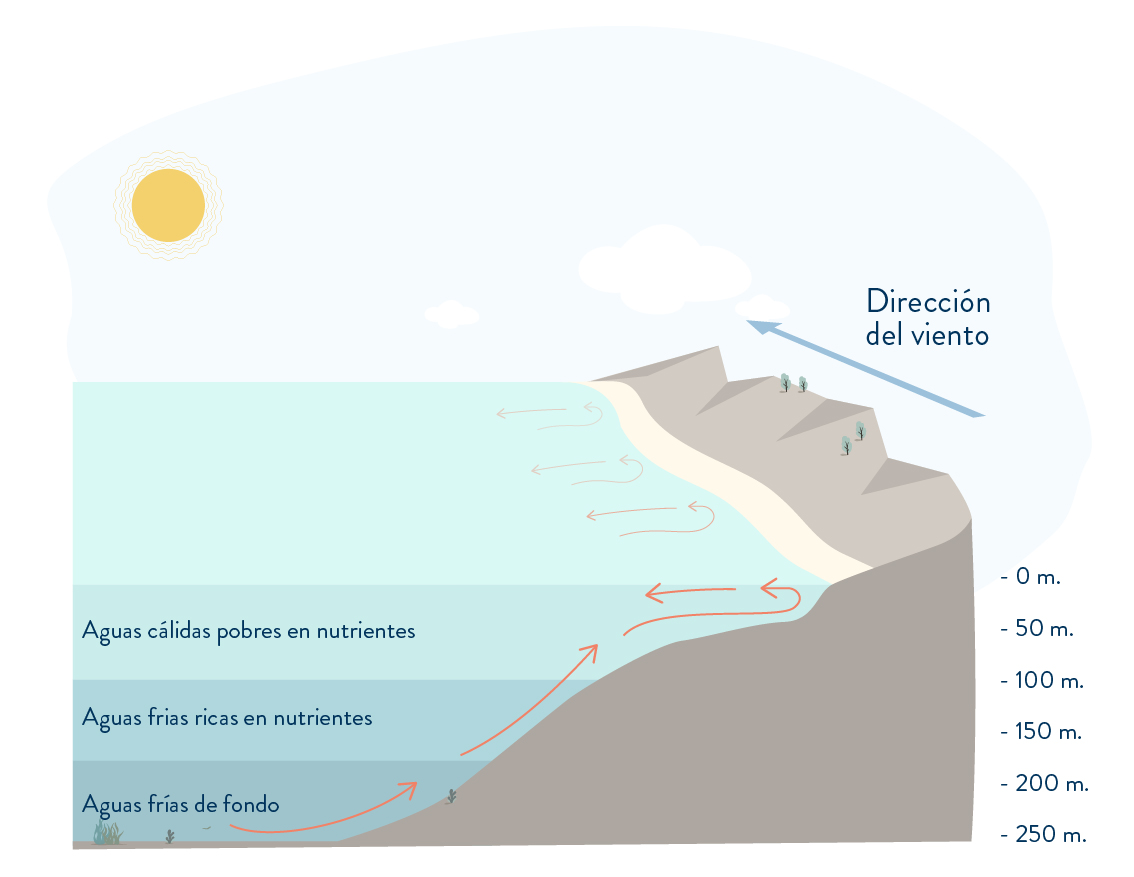
ACIDIFICATION
The term ocean acidification is used to describe the constant increase in acidity (decrease in ocean pH) caused by absorption of part of the atmospheric CO2 produced by burning fossil fuels. Although this could be viewed as positive in terms of decreasing CO2 levels in the atmosphere and, therefore, reducing the impacts of climate change, ocean acidification has become widespread and it has a profound impact on ocean ecosystems.
CO2 dissolves more easily in cold water than in warm water. Therefore, ocean acidification will be higher at the Poles than at the Equator.
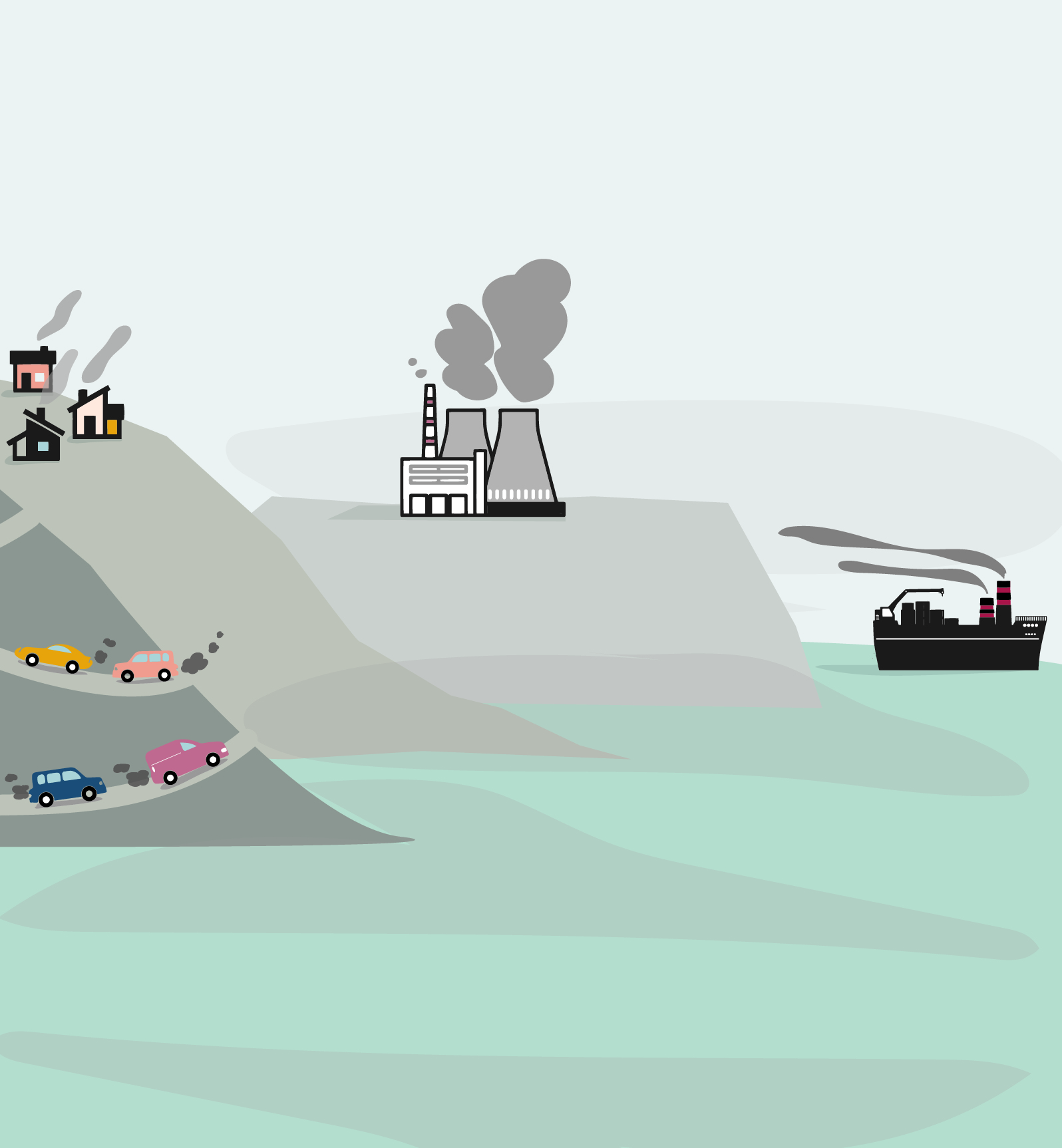
The average pH of ocean surface waters has already dropped by approximately 0.1 units, from 8.2 to 8.1 at the beginning of the Industrial Revolution. This is highly significant since a drop of just 0.1 pH units represents an increase in acidity of 25%. At the end of the 21st century, predictions based on various scenarios indicate that the ocean’s pH will have reduced from 0.3 to 0.04 units, which means that the hydrogen ion (H+) concentration would have increased by 100%.
IMPACTS OF ACIDIFICATION
IMPACTS OF ACIDIFICATION
Marine organisms, such as calcareous plankton (for example foraminifera), shellfish, sea urchins, crustaceans and deep-water corals, which depend on dissolved carbonate to form their shells and external skeletons, are more at risk from ocean acidification.
However, harmful impacts are broader than those associated only with the secretion of calcium-carbonate structures. They include:
- Reduction in the survival of the larval stages of marine species, including commercial fish and shellfish.
- A deterioration in the development of invertebrates during fertilisation within the egg and when they are larvae during colony establishment and reproduction.
- Excessive levels of CO2 in the blood of fish and cephalopods that are toxic enough to significantly reduce growth and fertility in some species.
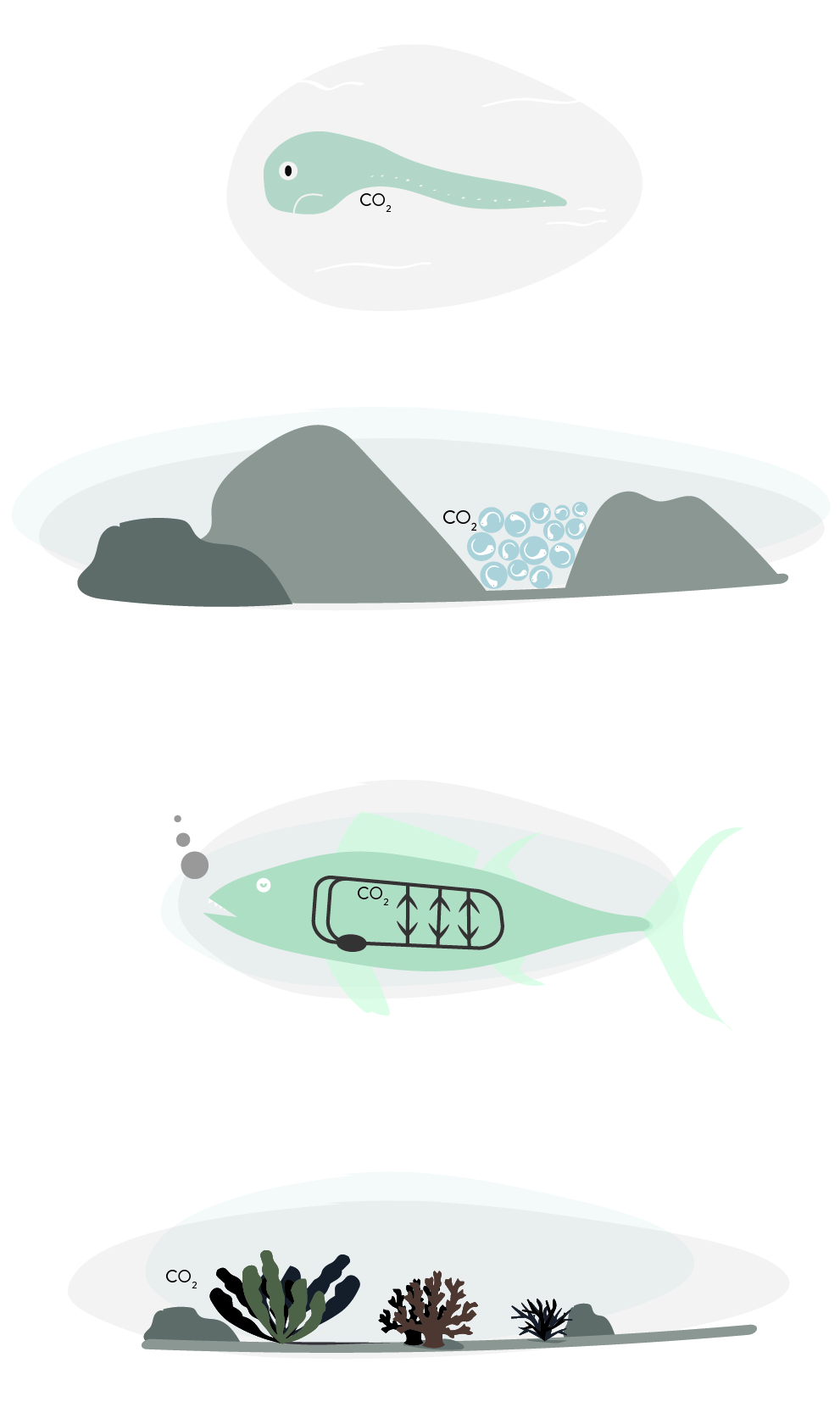
CLIMATE CHANGE
The scientific community has said that over 90% of the additional heat generated by climate change has been absorbed by the oceans. Without phytoplankton’s capacity to assimilate carbon and the role ocean currents play in transporting dissolved CO2 to the depths and keeping it out of the atmosphere in the long term, the world would suffer much higher temperatures.
But the huge added extra heat to the oceans is already damaging the creatures living in them, supercharging storms like Gloria in 2020 and destroying ecosystems like the Great Barrier Reef. If the oceans’ natural systems deteriorate, they will stop storing carbon and will instead start to release it, which would then harm the biosphere.
Another, perhaps more concerning, factor also has to be considered: how water expands as it heats up; warmer water means an increase in sea level, which poses a danger for people living along coasts and on islands.
How will climate change impact rising sea levels?
Remember that the Arctic is a mass of ice floating in the sea, while the Antarctic is a continent covered in ice. What impact will the increase in melted ice have?
If Arctic ice melted, would the level of seas and oceans rise?
And if the melted ice comes from glaciers, Greenland or the Antarctic ice sheet?
